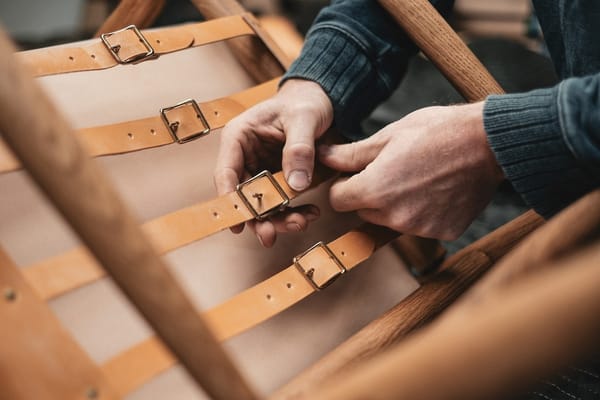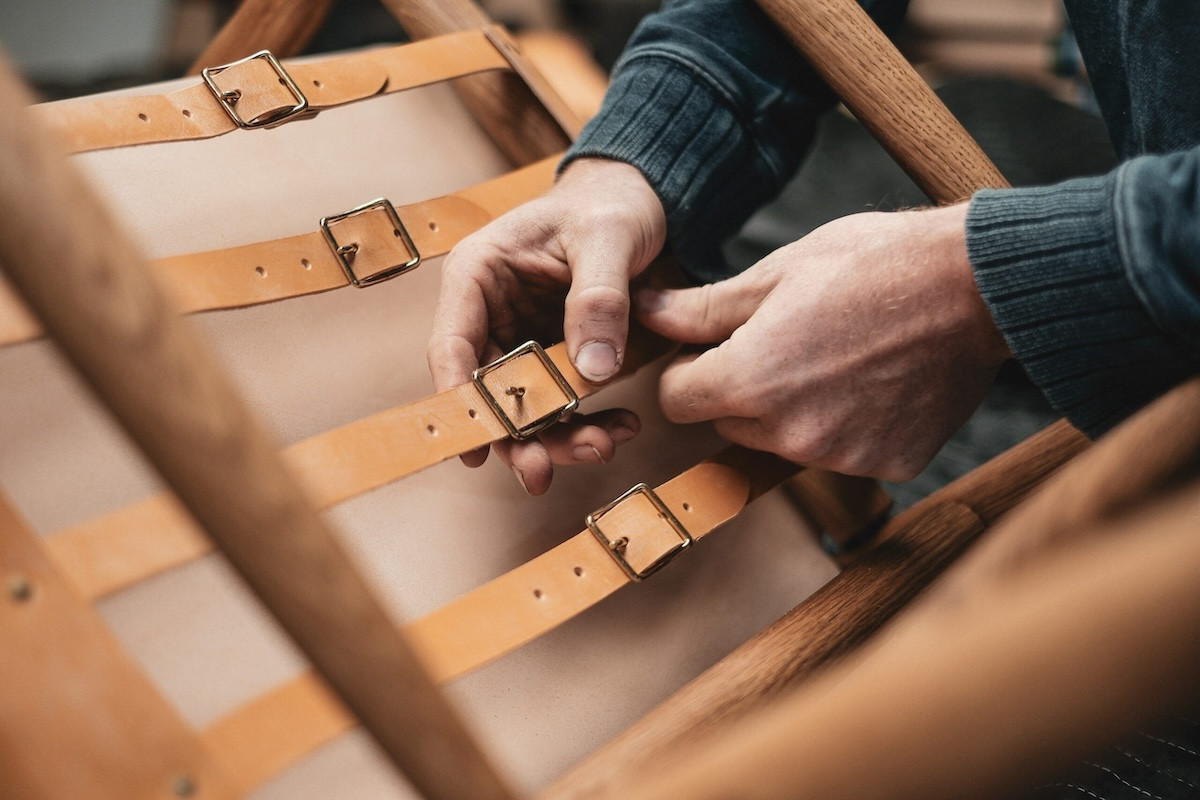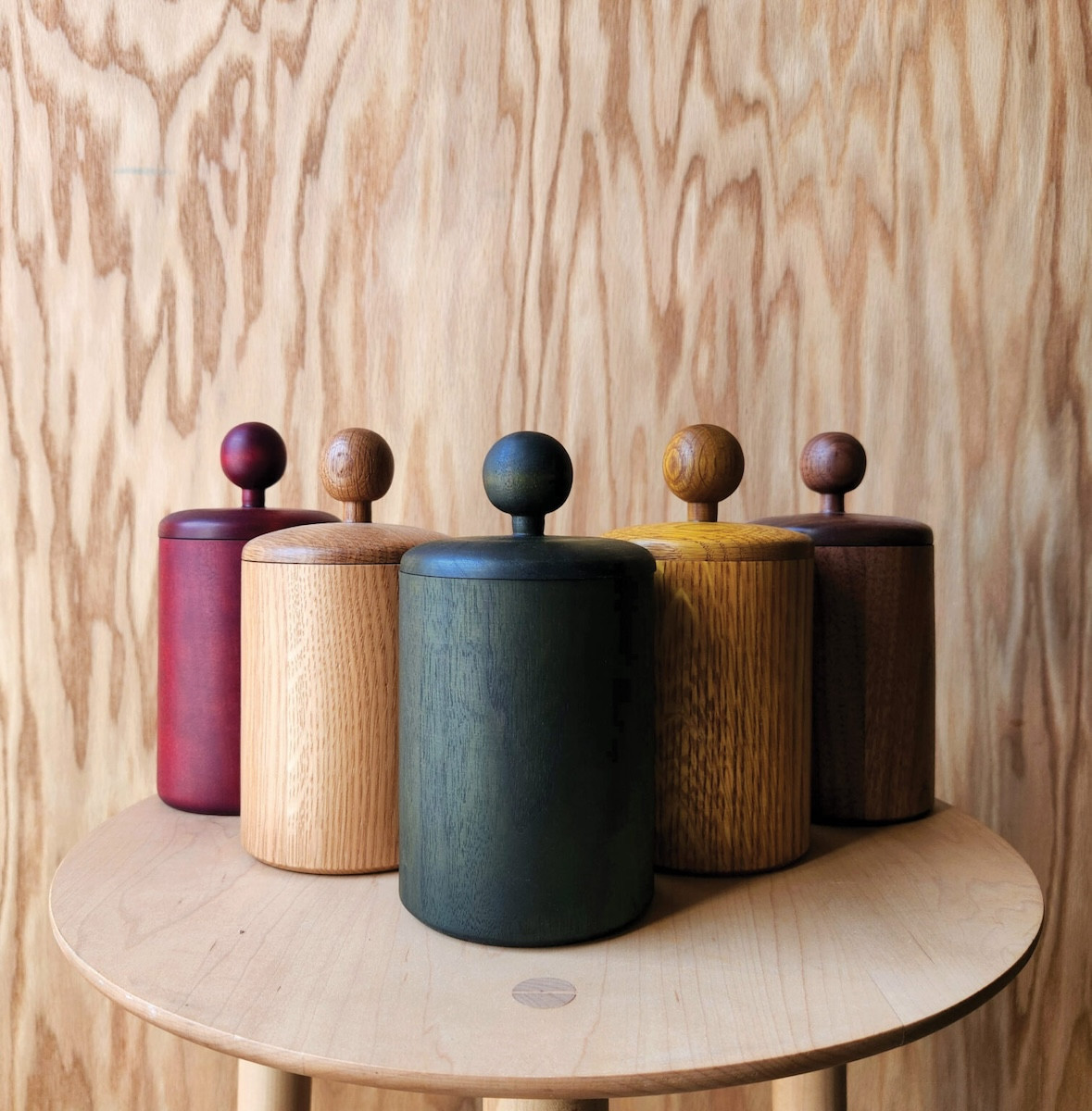Carpenter Sam Shippee’s Crafted World at Small Goods Design in Pine Plains
Sam Shippee's bespoke constructions take time and care... and it shows.

Sam Shippee's bespoke constructions take time and care... and it shows.

Photos courtasy of Small Goods Design.
Sam Shippee has always had what he calls a design-focused brain. As a young person, this revealed itself when making art that—influenced by his mother and father, a writer and painter, respectively—he intended to sell. After binding a single handmade book, for instance, Shippee would immediately set his sights on streamlining the process in order to produce 50 with ease. This early affinity for what he came to understand as process engineering—a systematic approach to design that optimizes efficiency while balancing quality with cost—stuck with him.
“A big part of the enjoyment I get from making furniture is designing how I make it,” says Shippee, whose interest in woodworking took shape after enrolling at Rhode Island School of Design (RISD) to study sculpture. When choosing a major, he had contemplated furniture design but wanted experience working with a host of methods and materials—from bronze casting and latex molding to metal and wood—which he got his first year. During his very first woodworking class, Shippee remembers being captivated by the lathe, a machining tool that rotates the workpiece around a stationary cutting tool, removing excess material and creating an intentional cylindrical shape in the process. In the ensuing dozen years, he has scarcely looked back.
“I’ve always been drawn to turning, as it’s the most one-to-one form of woodworking [I’ve encountered],” says Shippee, in a nod to the very natural feeling of a rough-hewn log taking shape before his eyes. It doesn’t hurt that lathe work, considered a subtractive art, is a close cousin to sculpture.

Following his graduation from RISD in 2016, Shippee made an intentional shift away from making art for art’s sake. A fledgling woodshop in his parents’ garage, coupled with a stint working in others’ shops, led to Small Goods Design, Shippee’s furniture and turning studio in Pine Plains. Now 30, he credits accessibility as the driving force behind his chosen craft.
Turning requires just two tools, a lathe and a bandsaw; it can happen in a relatively small space; and, perhaps best of all, the process can utilize green wood—bypassing the need for professionally dried wood which takes time and money to procure.
“Green turning allows me to cut a log in half and turn the general shape of a bowl—which I leave a little thick, a little big—before leaving it to dry and then turning it again,” says Shippee of a protracted process that allows him to use bigger pieces of wood. While he favors white oak and black walnut, the most sought after domestic lumber in the industry, Shippee also works with cherry, maple and, on occasion, ash. He does not source any wood from overseas.
On the ground floor of an industrial building downtown, tangible evidence of this ethos abounds. “I’m all about form,” Shippee says, emphasizing an affinity for the sculptural aspects of a piece as opposed to its specific use. “All my pieces are functional, but I think about function in a loose way,” he says nodding to a panoply of short and tall candlesticks, lidded containers, and cutting boards.
When it comes to making furniture, Shippee’s focus lies in a single arena. “I make a huge effort to ensure that every chair I sell is genuinely comfortable,” he says, underscoring the importance of ergonomics. All of Shippee’s made-to-order furniture, from his line of all-wood dining chairs to a 10-foot trestle table and zig-zag bench, is equally useful and beautiful. A big part of the collection is color, as evidenced by stains—in six hues spanning denim and olive to pomegranate and rose—designed to showcase the natural (and by extension gorgeous) grain of the wood.
This keen eye for color extends to complementary materials. Sling arm chairs put leather from a boutique Hudson Valley tannery to good use; ditto for the Windham bench and barstool, a pair of newish additions to the line. Further visual interest blooms by way of a floral design gracing cutting boards and other vessels—an effect that uses resist liquid to create a negative image that retains the wood’s original color in concert with food-safe reaction finish that ebonizes the exposed wood. Painter Kiernan Pazdar, who is also Shippee’s spouse, works from the studio above and is a frequent collaborator when it comes to such artistic endeavors.
“Pine Plains is deep in its roots, and the locals are still the locals—they haven’t been pushed out,” says Shippee, a graduate of Kingston High School. His affinity for Dutchess and Columbia Counties is evident in his Millbrook chair and Ancram mirror, seemingly small shout-outs to what he likes best about living and working in this region of tight-knit communities.
When he’s not dreaming up new designs or filling custom orders, Shippee has a bustling wholesale business. A dearth of small-batch manufacturers means established brands seek him out to create various turned components for their finished products that they either can’t—or don’t want to—make, in batches of about 50 or more at a time. In many ways, Shippee’s process continues to revolve around the lessons he learned two decades ago as a once-burgeoning bookbinder.
“Turning complicated pieces on the lathe requires a machinist mentality,” says Shippee, underscoring the order of operations required to do niche work well.
“I find joy in reaping the value from my work,” says Shippee, who admits that production work—like making 100 chair spindles at a time—can be equally draining and rewarding for a single reason: Those hard-to-replicate creative processes he often encountered as a kid have been eradicated.
And so, inspired by the tool of his chosen trade, Shippee’s creative woodworking wheels keep turning.












